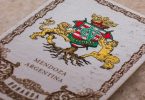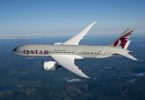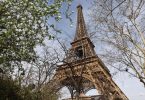Barge cruising has come a long way since the first modern hotel barge was built on the hull of a French cargo carrier in the late 1960s. Today, there are dozens of barges cruising the canals and rivers of France, Britain, the Low Countries, Germany, Ireland, and Italy, providing a vacation experience that might be described as point-to-point freshwater cruising on a roomy (and very slow) inland yacht.
Over the course of a week or so, a barge’s six to 12 passengers cover less distance than a fast car can drive in two hours, with plenty of time to explore the villages, towns, and towpaths along the way. Although the occasional distraction can be thrown in (hot-air ballon rides are popular), the emphasis is on relaxation and low-speed sightseeing. Barge cruising is the touring counterpart of the “slow food” movement, and it may be the best treatment for high blood pressure since Lisinopril.
European Waterways Ltd., which has a Web site at GoBarging.com, is among the largest (and is certainly one of the most experienced) operators of hotel barges in Europe. The company’s first barge, the Anjodi, began cruising in the early 1980s, and its owner–a former yacht captain named Derek Banks–now presides over a fleet of luxury hotel barges in eight countries.
Late in 2007, European Waterways acquired its most luxurious barge to date. The former Bonne Humeur, rechristened La Renaissance, began operations on the canals of Western Burgundy and the Upper Loire in May, 2008. (Passengers are picked up and dropped off in Paris, which is a great convenience for guests who are flying in from abroad.)
We were on the barge’s maiden voyage in its new European Waterways livery, and this article describes both our experience and what you can expect from a six-night cruise on La Renaissance.
river yacht for eight passengers
La Renaissance began its life in 1960 as a French cargo barge. In 1997, the vessel was converted to a hotel barge, and it underwent another refit in 2006. After its acquisition by European Waterways in 2007, the barge was taken to a shipyard in Belgium for inspection, maintenance, and updating.
The barge measures 128 feet long by 17 feet 6 inches wide, or just over 51 by 5 meters. It was built to fit the locks of the canals in central France, which are smaller than river locks but larger than the locks in the Canal du Midi. For a layman, it’s impressive to watch the captain and pilot squeeze La Renaissance into a 19th Century lock that offers just inches of clearance on either side.
La Renaissance has two decks:
The main or upper deck has an open bow, with a partial roof that shields the eight-person round table from sun or rain. The rest of the bow is uncovered, with a hot tub just behind the anchor winch.
Just aft of the bow area is a huge public room that’s divided into two sections: the main saloon or living room, and a dining area with a large round table. Passengers can take soft drinks, mineral water, beer, or spirits from the bar without charge at any hour of the day. (A door at the back of the dining room leads to the kitchen, which guests are free to visit.)
From the saloon, stairs lead down to the lower deck, which has four two-person staterooms. (The cabins on La Renaissance aren’t wheelchair-accessible; if you can’t manage steps, you may want to consider a cruise on another European Waterways barge, La Reine Pedauque, which has lifts, two suites with wheelchair facilities, and a lift-equipped minibus for shore excursions.)
The helm, where the pilot steers the barge, is just behind the kitchen. (La Renaissance has a top speed of 10 knots, or 11.5 mph / 18.5 km/h), but most of the time it cruises at the canal speed limit of 6 km/h or 4 mph.) Crew quarters are aft and all the way forward; most of the crew live on board, although, on our cruise, the chef went home to his wife and baby most nights.
Staterooms
Barge cabins tend to be more cozy than spacious, but the staterooms on La Renaissance–dubbed “suites” by European Waterways–are huge by the standards of most barges and river cruisers. The bow and stern suites (“Voltaire” and “Molière”) measure 270 square feet or 25 m², while the two suites in the middle of the barge (“Hugo” and “Dumas”) are only slightly smaller at 260 square feet or 24 m².
Each cabin has beds that can be arranged as twin or king-size beds, plus a dresser, a small table, and built-in nightstands. (The bow and stern cabins also have chairs.) Closet space is generous, with plenty of room for clothing and luggage, and the bathrooms are larger than their counterparts on some oceangoing cruise ships.
Bathroom floors are made of teak (with ceramic tile in the toilet areas), and the shower enclosures are fairly roomy, with curved polycarbonate doors. Toiletries are by L’Occitane de Provence; each cabin also comes with an electric hair dryer and two bathrobes.
The central heating works well in chilly weather, but we woke up sweltering one night after the crew cranked up the heat instead of suggesting that a cold passenger add a second blanket. On the plus side, the wall-mounted air-conditioning unit is controlled individually by a remote device next to the bed, and we had no problem cooling our stateroom on warm, sunny days.
Our only real complaint was with the twin portholes, which had only thin curtains instead of lined blackout curtains or screw-down covers. (If you’re a light-sensitive sleeper, you might want to bring an eye mask.)
Dining
Breakfast on La Renaissance consists of baguettes, croissants, and other pastries (obtained from village bakeries en route) plus two cereals, ham and cheese, and a simple fruit salad. The staff will cook eggs on request, but don’t expect a full English breakfast: The chef wants you to have an appetite for lunch.
Lunch typically consists of something hot (such as a quiche or a whole salmon baked in rock salt) along with several different salads. A cheese course (with two different cheeses) rounds out the meal.
Dinner is a more elaborate affair that includes a soup or starter, a main course, two French cheeses, a dessert, and coffee. On our cruise, dinner usually started at 7:30 p.m. and lasted about two hours.
Sylvain, the chef, was a young man of exceptional talents. He was also accommodating: If a passenger had a food allergy or simply didn’t like something, he’d provide a substitute–such as individual cheese-free quiches and tarts for a passenger who couldn’t tolerate cheese.
European Waterways cruise fares include wine, spirits, and other beverages, with different red and white wine selections (and occasionally a rosé) at every lunch and dinner. The staff make a point of describing both the wines and the cheeses, so bring your pocket notebook if you’re a connoisseur of vin or fromage.
Tip: You’ll get the most value from a barge cruise if you’re open-minded about food and wine, and if you enjoy new culinary experiences. If you’d just as soon have a steak and baked potato at every meal, you might be happier on a mass-market cruise ship.
he crew
La Renaissance normally cruises with a crew of five, including:
The captain. Jean-Pierre, the captain of La Renaissance during our May, 2008 cruise, is a veteran of diving and special operations in the French Navy. (On an excursion to Fontainebleau, he confided that, if anyone bothered his passengers, he’d feel like killing the offender. Fortunately, the necessity didn’t arise, and Jean-Pierre was both a gentleman and a kind, gentle man during our six-night cruise.)
The pilot/engineer. Ellie, who learned to sail in Guadaloupe, is in charge of the helm, the generators, and the 250-hp diesel engine. He’s a friendly, cheerful man who willingly teaches passengers how to steer the barge.
The chef. Sylvain, our chef de cuisine, is a culinary one-man band. He has the knack of preparing several courses at the same time (everything from appetizers to a dessert) while carrying on a conversation with visitors in his kitchen.
The housekeeping and service staff. Amy keeps the barge shipshape and helps in the dining room, while her husband Mike is the resident sommelier, cheese server, deckhand, and assistant pilot. The young couple are from New Zealand; during the off-season, they work at a chalet in the French Alps.
On our voyage, we were also blessed with the presence of Philippe, the company’s operations manager for France, and Phil, the captain of the barge under its previous owner, who was acting as a consultant to Jean-Pierre and Philippe during La Renaissance’s maiden cruise with European Waterways.
Note: Barge crews don’t stand on ceremony, and during our cruise, it wasn’t unusual for the captain or the company’s operations manager to serve food, pour wine, or perform deckhand chores.
More information on http://gobarging.com/
(eTN): Review: A Barge Cruise in France | re-post license | post content





















